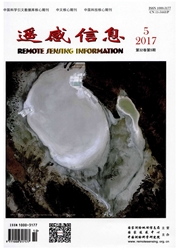

 中文摘要:
中文摘要:
将同期的EnviSat-ASAR图像和MODIS图像进行配准,利用经过大气校正后的MODIS光学图像,根据经验模型反演得到叶绿素a的浓度,借此对太湖的藻华和非藻华区域进行划分,并以此为据在ASAR图像上研究两者的V/V后向散射特性,使用阈值法对藻华范围进行提取,并将结果与MODIS图像上得到的藻华范围进行对比,有较好的吻合。分析二者结果表明,风速会造成藻华漂移和沉浮并且影响湖面粗糙度,是决定提取结果好坏的关键因素。另外从成像机理上,太湖粗糙度不规则性和介电特性上的误差使得藻华提取阈值不具有适用性,也是此次提取藻华结果不完全一致的原因,恰恰也成为了利用微波数据监测藻华的局限所在。
 英文摘要:
英文摘要:
Simultaneous ASAR and MODIS images are registrated together. After applying atmosphere correction to MODIS image, we can use an empirical model to retrieve chlorophyll-a concentration, then the algae bloom can be identified. Based on this classification, the V/V backscattering characteristics of algae in ASAR image has been examined and the water body containing algae can be extracted using threshold classification method. Then, a comparison has been made between the classifications u- sing ASAR and MODIS images and the results matched well. So a conclusion can be made that the algae bloom can be shown on the SAR image under certain conditions. Because of the wind's influence on the drifting and vicissitude of algae bloom, the wind speed becomes the key factor that determines the result. Furthermore, irregularity of surface roughness and error in dielectric property make the threshold not universal to all weather conditions, which adds to the weakness of SAR application in algae bloom monitoring.
 同期刊论文项目
同期刊论文项目
 同项目期刊论文
同项目期刊论文
 期刊信息
期刊信息
